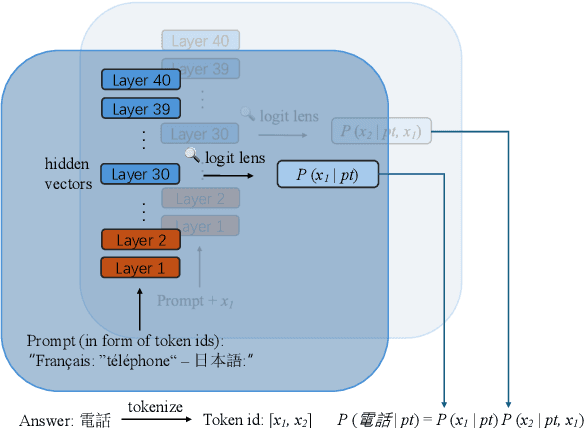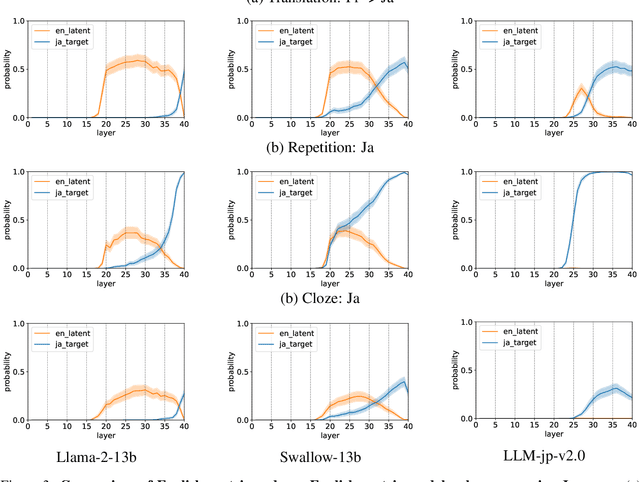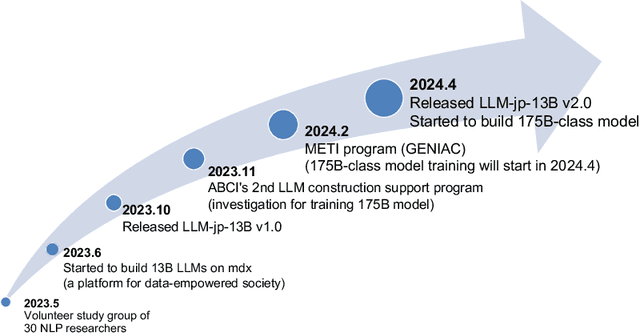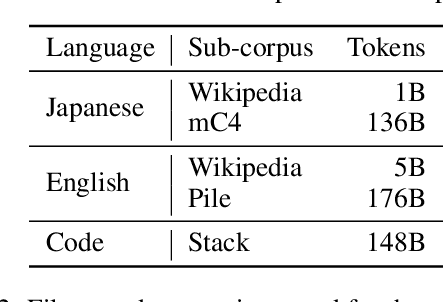Sadao Kurohashi
Causal Tree Extraction from Medical Case Reports: A Novel Task for Experts-like Text Comprehension
Mar 03, 2025Abstract:Extracting causal relationships from a medical case report is essential for comprehending the case, particularly its diagnostic process. Since the diagnostic process is regarded as a bottom-up inference, causal relationships in cases naturally form a multi-layered tree structure. The existing tasks, such as medical relation extraction, are insufficient for capturing the causal relationships of an entire case, as they treat all relations equally without considering the hierarchical structure inherent in the diagnostic process. Thus, we propose a novel task, Causal Tree Extraction (CTE), which receives a case report and generates a causal tree with the primary disease as the root, providing an intuitive understanding of a case's diagnostic process. Subsequently, we construct a Japanese case report CTE dataset, J-Casemap, propose a generation-based CTE method that outperforms the baseline by 20.2 points in the human evaluation, and introduce evaluation metrics that reflect clinician preferences. Further experiments also show that J-Casemap enhances the performance of solving other medical tasks, such as question answering.
Assessing Large Language Models in Agentic Multilingual National Bias
Feb 25, 2025Abstract:Large Language Models have garnered significant attention for their capabilities in multilingual natural language processing, while studies on risks associated with cross biases are limited to immediate context preferences. Cross-language disparities in reasoning-based recommendations remain largely unexplored, with a lack of even descriptive analysis. This study is the first to address this gap. We test LLM's applicability and capability in providing personalized advice across three key scenarios: university applications, travel, and relocation. We investigate multilingual bias in state-of-the-art LLMs by analyzing their responses to decision-making tasks across multiple languages. We quantify bias in model-generated scores and assess the impact of demographic factors and reasoning strategies (e.g., Chain-of-Thought prompting) on bias patterns. Our findings reveal that local language bias is prevalent across different tasks, with GPT-4 and Sonnet reducing bias for English-speaking countries compared to GPT-3.5 but failing to achieve robust multilingual alignment, highlighting broader implications for multilingual AI agents and applications such as education.
Beyond English-Centric LLMs: What Language Do Multilingual Language Models Think in?
Aug 20, 2024



Abstract:In this study, we investigate whether non-English-centric LLMs, despite their strong performance, `think' in their respective dominant language: more precisely, `think' refers to how the representations of intermediate layers, when un-embedded into the vocabulary space, exhibit higher probabilities for certain dominant languages during generation. We term such languages as internal $\textbf{latent languages}$. We examine the latent language of three typical categories of models for Japanese processing: Llama2, an English-centric model; Swallow, an English-centric model with continued pre-training in Japanese; and LLM-jp, a model pre-trained on balanced English and Japanese corpora. Our empirical findings reveal that, unlike Llama2 which relies exclusively on English as the internal latent language, Japanese-specific Swallow and LLM-jp employ both Japanese and English, exhibiting dual internal latent languages. For any given target language, the model preferentially activates the latent language most closely related to it. In addition, we explore how intermediate layers respond to questions involving cultural conflicts between latent internal and target output languages. We further explore how the language identity shifts across layers while keeping consistent semantic meaning reflected in the intermediate layer representations. This study deepens the understanding of non-English-centric large language models, highlighting the intricate dynamics of language representation within their intermediate layers.
LLM-jp: A Cross-organizational Project for the Research and Development of Fully Open Japanese LLMs
Jul 04, 2024



Abstract:This paper introduces LLM-jp, a cross-organizational project for the research and development of Japanese large language models (LLMs). LLM-jp aims to develop open-source and strong Japanese LLMs, and as of this writing, more than 1,500 participants from academia and industry are working together for this purpose. This paper presents the background of the establishment of LLM-jp, summaries of its activities, and technical reports on the LLMs developed by LLM-jp. For the latest activities, visit https://llm-jp.nii.ac.jp/en/.
MELD-ST: An Emotion-aware Speech Translation Dataset
May 21, 2024Abstract:Emotion plays a crucial role in human conversation. This paper underscores the significance of considering emotion in speech translation. We present the MELD-ST dataset for the emotion-aware speech translation task, comprising English-to-Japanese and English-to-German language pairs. Each language pair includes about 10,000 utterances annotated with emotion labels from the MELD dataset. Baseline experiments using the SeamlessM4T model on the dataset indicate that fine-tuning with emotion labels can enhance translation performance in some settings, highlighting the need for further research in emotion-aware speech translation systems.
J-CRe3: A Japanese Conversation Dataset for Real-world Reference Resolution
Mar 28, 2024Abstract:Understanding expressions that refer to the physical world is crucial for such human-assisting systems in the real world, as robots that must perform actions that are expected by users. In real-world reference resolution, a system must ground the verbal information that appears in user interactions to the visual information observed in egocentric views. To this end, we propose a multimodal reference resolution task and construct a Japanese Conversation dataset for Real-world Reference Resolution (J-CRe3). Our dataset contains egocentric video and dialogue audio of real-world conversations between two people acting as a master and an assistant robot at home. The dataset is annotated with crossmodal tags between phrases in the utterances and the object bounding boxes in the video frames. These tags include indirect reference relations, such as predicate-argument structures and bridging references as well as direct reference relations. We also constructed an experimental model and clarified the challenges in multimodal reference resolution tasks.
AcTED: Automatic Acquisition of Typical Event Duration for Semi-supervised Temporal Commonsense QA
Mar 27, 2024



Abstract:We propose a voting-driven semi-supervised approach to automatically acquire the typical duration of an event and use it as pseudo-labeled data. The human evaluation demonstrates that our pseudo labels exhibit surprisingly high accuracy and balanced coverage. In the temporal commonsense QA task, experimental results show that using only pseudo examples of 400 events, we achieve performance comparable to the existing BERT-based weakly supervised approaches that require a significant amount of training examples. When compared to the RoBERTa baselines, our best approach establishes state-of-the-art performance with a 7% improvement in Exact Match.
Rapidly Developing High-quality Instruction Data and Evaluation Benchmark for Large Language Models with Minimal Human Effort: A Case Study on Japanese
Mar 06, 2024



Abstract:The creation of instruction data and evaluation benchmarks for serving Large language models often involves enormous human annotation. This issue becomes particularly pronounced when rapidly developing such resources for a non-English language like Japanese. Instead of following the popular practice of directly translating existing English resources into Japanese (e.g., Japanese-Alpaca), we propose an efficient self-instruct method based on GPT-4. We first translate a small amount of English instructions into Japanese and post-edit them to obtain native-level quality. GPT-4 then utilizes them as demonstrations to automatically generate Japanese instruction data. We also construct an evaluation benchmark containing 80 questions across 8 categories, using GPT-4 to automatically assess the response quality of LLMs without human references. The empirical results suggest that the models fine-tuned on our GPT-4 self-instruct data significantly outperformed the Japanese-Alpaca across all three base pre-trained models. Our GPT-4 self-instruct data allowed the LLaMA 13B model to defeat GPT-3.5 (Davinci-003) with a 54.37\% win-rate. The human evaluation exhibits the consistency between GPT-4's assessments and human preference. Our high-quality instruction data and evaluation benchmark have been released here.
RecMind: Japanese Movie Recommendation Dialogue with Seeker's Internal State
Feb 21, 2024



Abstract:Humans pay careful attention to the interlocutor's internal state in dialogues. For example, in recommendation dialogues, we make recommendations while estimating the seeker's internal state, such as his/her level of knowledge and interest. Since there are no existing annotated resources for the analysis, we constructed RecMind, a Japanese movie recommendation dialogue dataset with annotations of the seeker's internal state at the entity level. Each entity has a subjective label annotated by the seeker and an objective label annotated by the recommender. RecMind also features engaging dialogues with long seeker's utterances, enabling a detailed analysis of the seeker's internal state. Our analysis based on RecMind reveals that entities that the seeker has no knowledge about but has an interest in contribute to recommendation success. We also propose a response generation framework that explicitly considers the seeker's internal state, utilizing the chain-of-thought prompting. The human evaluation results show that our proposed method outperforms the baseline method in both consistency and the success of recommendations.
Bilingual Corpus Mining and Multistage Fine-Tuning for Improving Machine Translation of Lecture Transcripts
Nov 07, 2023Abstract:Lecture transcript translation helps learners understand online courses, however, building a high-quality lecture machine translation system lacks publicly available parallel corpora. To address this, we examine a framework for parallel corpus mining, which provides a quick and effective way to mine a parallel corpus from publicly available lectures on Coursera. To create the parallel corpora, we propose a dynamic programming based sentence alignment algorithm which leverages the cosine similarity of machine-translated sentences. The sentence alignment F1 score reaches 96%, which is higher than using the BERTScore, LASER, or sentBERT methods. For both English--Japanese and English--Chinese lecture translations, we extracted parallel corpora of approximately 50,000 lines and created development and test sets through manual filtering for benchmarking translation performance. Through machine translation experiments, we show that the mined corpora enhance the quality of lecture transcript translation when used in conjunction with out-of-domain parallel corpora via multistage fine-tuning. Furthermore, this study also suggests guidelines for gathering and cleaning corpora, mining parallel sentences, cleaning noise in the mined data, and creating high-quality evaluation splits. For the sake of reproducibility, we have released the corpora as well as the code to create them. The dataset is available at https://github.com/shyyhs/CourseraParallelCorpusMining.
 Add to Chrome
Add to Chrome Add to Firefox
Add to Firefox Add to Edge
Add to Edge